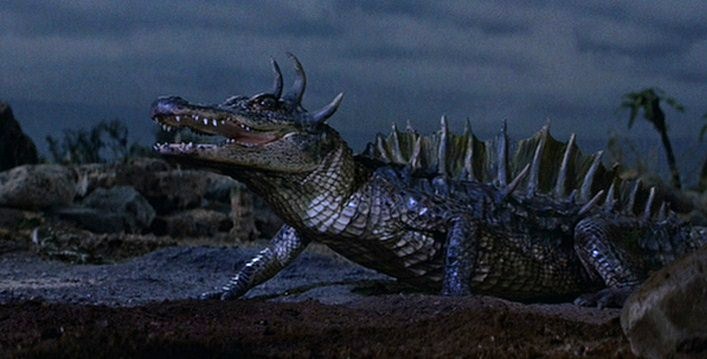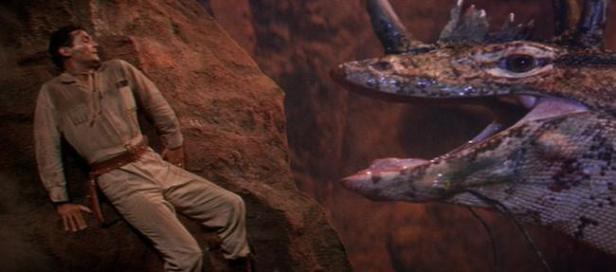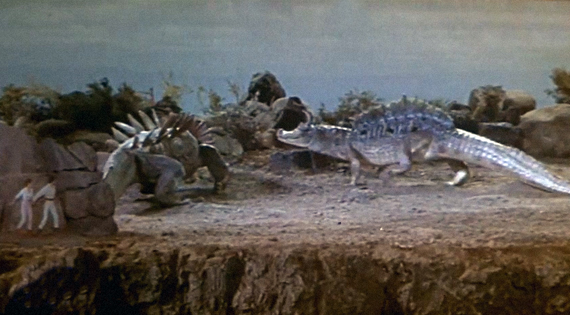
Posted on 02/11/2017 9:17:58 PM PST by nickcarraway
Several complete skeletons hint at sudden, mass extinction
Researchers from the Whiteside Museum of Natural History in Seymour are unraveling an ancient mystery.
"This is life," said Coleton Caldwell, assistant director of the museum. "The first time life is living on land, solely on land, and it's still trying to figure things out, you know? What works, what doesn't work? So it's just really, really, really unique."
Working southwest of Wichita Falls, near the shore of Lake Kemp in Baylor County, the researchers have uncovered the skeletal remains of seven dimetrodons.
The mammal-like finback reptiles roamed parts of North Texas 60 million years before dinosaurs arrived.
Four of the skeletons are nearly complete, and all of them were found clustered together around what was then a watering hole.
The evidence suggests not all of them are from the same species.
"It's really unique how there's so many animals just in this one spot," said Caldwell. "And then the mystery of why they're all here, alive together."
"It's just all carnivores, which is really, really unique because it shouldn't work that way," said Caldwell.
"Something catastrophic enough happened to kill all these animals at once," said Museum Director Chris Flis. "And it happened in an area where there's no more life around to actually strip it of flesh and meat and bone, so something happened, something so major that nobody had the time, had time enough to come back and clean up the mess."
"This is probably something as simple as a slight change in chemicals or oxygen or CO2 level," said Flis. "So studying how these guys died can tell you what to look out for now."
Over the last several years, the team has accumulated a large collection of specimens from nearby dig sites in the vast Craddock Bone Bed.
"We've seen thousands and thousands of bones," said Flis. "So we're changing the way dimetrodon looks."
"It doesn't have a dinosaur-shaped nose," said Flis. "He's got a square nose, very similar to mammals, and the funny thing is he's got buck teeth. So the two giant fangs that stick out of the front shows that his teeth are really buck teeth that are good for puncturing very quickly."
"We're seeing a glimpse of life before the dinosaurs, which is very important because we're seeing the beginnings of where mammals come from," said Flis.
The most complete dimetrodon skeleton currently on display is at the Smithsonian National Museum of Natural History in Washington, D.C.

One of which was the semi-familiar Dimetrodon, seen in lots of old sci-fi films.

I doubt that a slight change in atmospheric CO2 would cause an immediate mass die-off.
Maybe his funding would die off if he didn't say that.
Some volcanic vents leaking out of a nearby lake, producing a layer of poisonous gas for miles around would do this. There are areas like that currently. There were likely many more way back then.
He said slight change.
I don’t think a slight change in CO2 would do it.
Lake Nyos, in Cameroon, seems to have done just that in 1986. 1,700 died, thousands of livestock, as well.
Read a story of a big belch of CO2 or methane from the bottom of a lake wiped out a whole village.
I wasn’t talking about CO2. I was talking about a change in ‘chemicals’, that change being the addition of tons of poisonous gas from underground vents in lakes.
Or a world wide flood
I was commenting on what the scientist said.
I did understand what you said.
Actually, what you saw in lots of old sci-fi films were iguanas or other contemporary reptiles with plastic prosthetics scotch-taped to their backs, heh-heh!
And the vegetation in that image doesn't look very authentic. There were, after all, no grasses (or other angiosperms) in the Permian Period.
Regards,
A fire storm from a gigantic falling meteor and its impact. The one 65 million years ago that hit the Yucatan Penninsula wiped out 90% of all life forms on Earth. Some smaller ones could cause local damage. Himalayan mountain range was the result of the big one from 65 million years ago. The entire Earth’s crust went liquid for about 2 seconds. And of course there is always moltan lava and gasses.
From Wikipedia...
Terrestrial life in the Permian included diverse plants, fungi, arthropods, and various types of tetrapods.
The period saw a massive desert covering the interior of Pangaea. The warm zone spread in the northern hemisphere, where extensive dry desert appeared.[18] The rocks formed at that time were stained red by iron oxides, the result of intense heating by the sun of a surface devoid of vegetation cover.
A number of older types of plants and animals died out or became marginal elements.
The Permian began with the Carboniferous flora still flourishing.
About the middle of the Permian a major transition in vegetation began. The swamp-loving lycopod trees of the Carboniferous, such as Lepidodendron and Sigillaria, were progressively replaced in the continental interior by the more advanced seed ferns and early conifers.
At the close of the Permian, lycopod and equisete swamps reminiscent of Carboniferous flora survived only on a series of equatorial islands in the Paleotethys Sea that later would become South China.[19]
The Permian saw the radiation of many important conifer groups, including the ancestors of many present-day families. Rich forests were present in many areas, with a diverse mix of plant groups. The southern continent saw extensive seed fern forests of the Glossopteris flora.
Oxygen levels were probably high there. The ginkgos and cycads also appeared during this period.
Actually, what you saw in lots of old sci-fi films were iguanas or other contemporary reptiles with plastic prosthetics scotch-taped to their backs, heh-heh!
Thanks, but I knew they used live lizards with miniature trees, landforms and such as backdrops to make them appear huge.
In fact, I can think of at least two episodes from the 1960s TV Sci-Fi series Lost In Space where they used a live lizard with a Dimetrodon-like ‘ribbed sail’ attached to its back. Lol!
And in the 1960s film The Lost World, among many other films of the time.
But my point was that Dimetrodon was often the creature they were trying to depict in these old films, inaccurately as a dinosaur, when, as the article posted here points out, it, and others of the period, weren’t, dinosaurs not having emerged until millions of years later.
They also used animation, puppets, and/or “go-motion”, whatever exactly that is, in some of these old dinosaur and big monster films.
Here, in The Lost World (1960), they apparently used a young alligator...

And some other reptile here...

Note the two people off to the left in this "split shot" below.

...is that David Heddison from Voyage to the Bottom of the Sea?? “Seaview”?
Yes. He played the reporter.
“David Hedison as Ed Malone — A journalist at the Global News who volunteers to join the expedition.”
Featured cast - The Lost World (1960)
https://en.wikipedia.org/wiki/The_Lost_World_(1960_film)#Featured_cast
Ironically, there was an actor who played a leading role in BOTH things I referenced (the 60s TV series Lost In Space AND the 1960 movie The Lost World).
And that was Michael Rennie
The Lost World (1960): “Michael Rennie as Lord John Roxton — An experienced big-game hunter who joins the expedition.”
Lost In Space (2-part episode The Keeper)
Lost in Space (1965) – [Michael Rennie] as “The Keeper” - two episodes


Michael Rennie, in Lost In Space episode, The Keeper

Scene from Lost In Space
Disclaimer: Opinions posted on Free Republic are those of the individual posters and do not necessarily represent the opinion of Free Republic or its management. All materials posted herein are protected by copyright law and the exemption for fair use of copyrighted works.